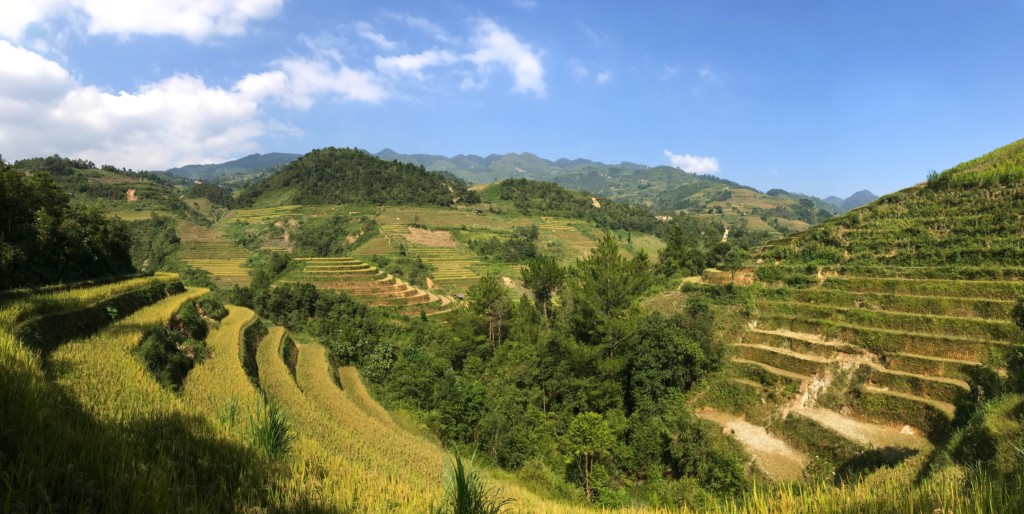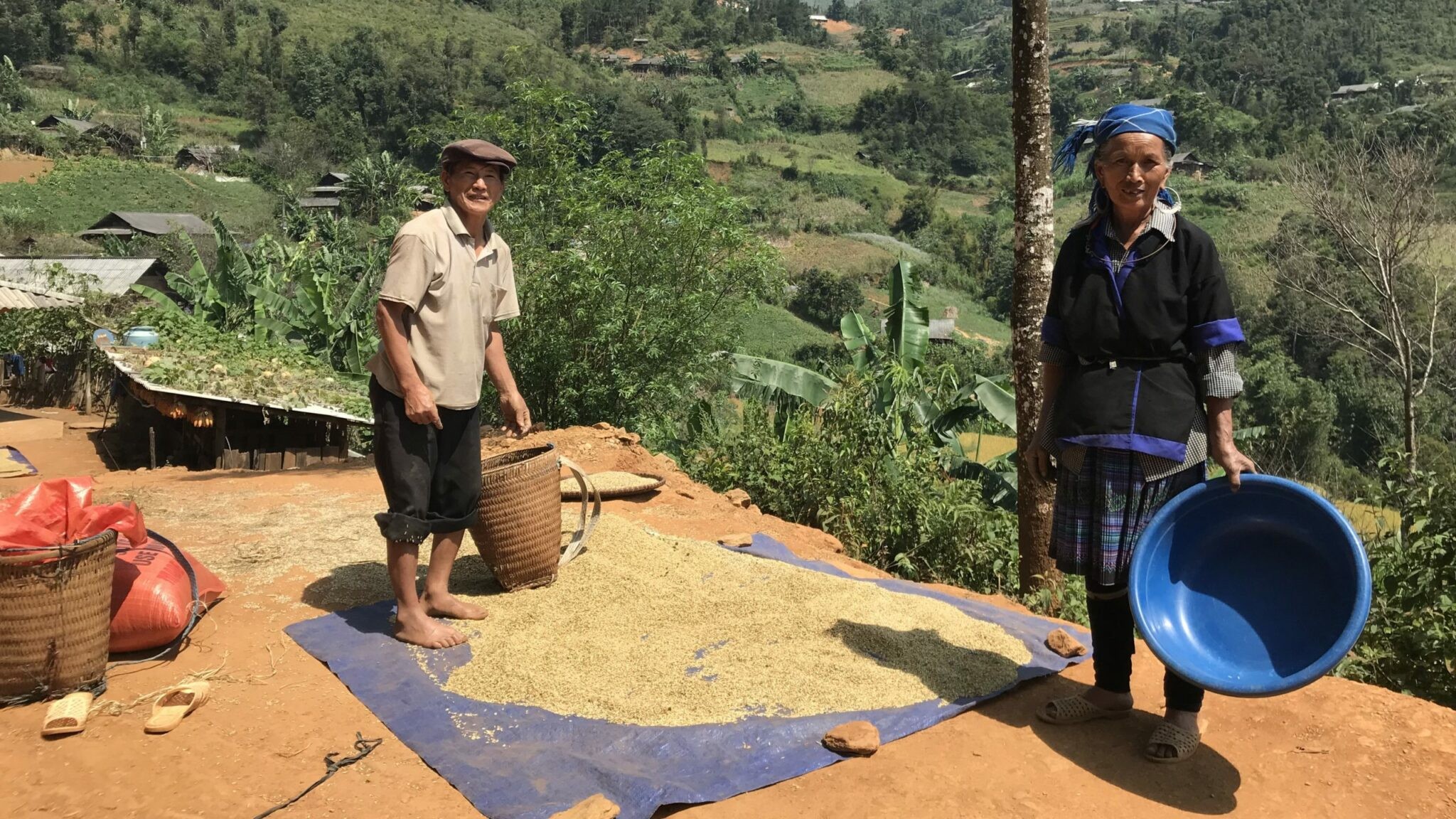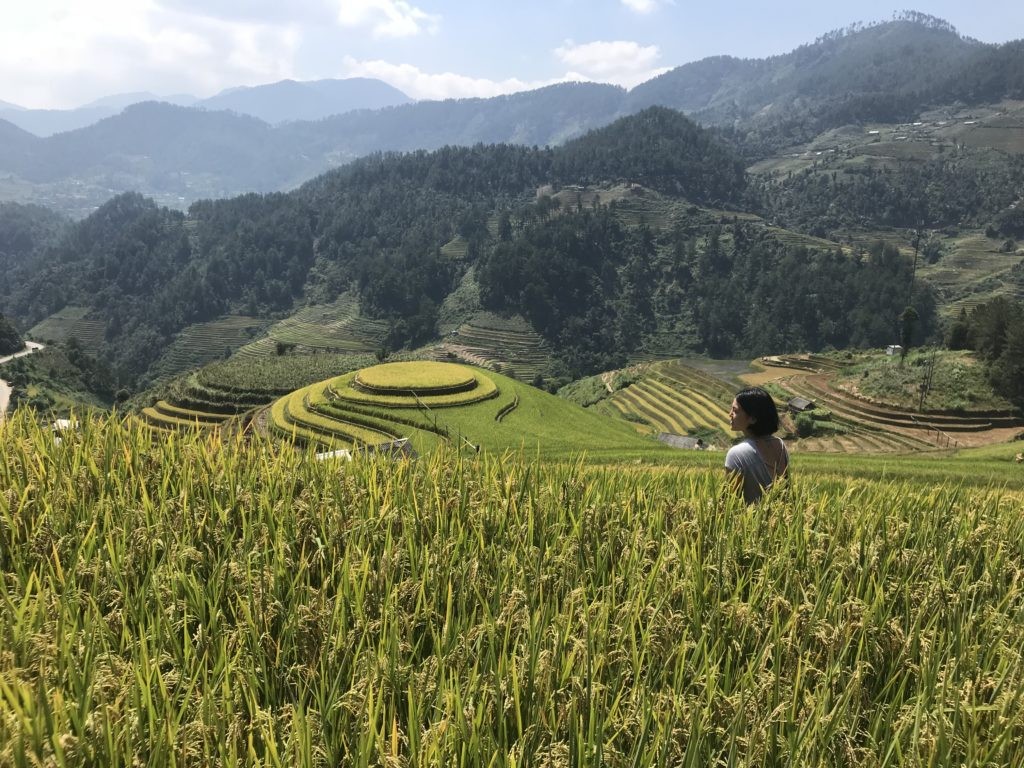Are you planning a trip to Mu Cang Chai to witness the breathtaking beauty of its terraced rice fields? Understanding the rice growing season is key to experiencing this region at its finest. At SIXT.VN, we provide comprehensive travel solutions for your Vietnam adventure, ensuring you don’t miss the most spectacular moments. Knowing the stages of rice cultivation will enhance your visit and allow you to appreciate the local culture and natural splendor.
1. Understanding the Rice Growing Season in Mu Cang Chai
The rice growing season in Mu Cang Chai is a fascinating cycle that transforms the landscape into a vibrant masterpiece. Understanding these stages can significantly enhance your travel experience, allowing you to witness the region’s beauty at its peak. According to the Vietnam National Administration of Tourism, the terraced fields of Mu Cang Chai are most picturesque during the planting and harvesting seasons.
1.1 What is the significance of Mu Cang Chai’s rice terraces?
Mu Cang Chai’s rice terraces are more than just agricultural land; they are a cultural and natural treasure. These terraces, carved into the steep hillsides, showcase the ingenuity and resilience of the local ethnic communities. Recognized as a National Heritage site by the Vietnamese government, the terraces attract tourists worldwide, contributing to the local economy and preserving traditional farming practices. These stunning landscapes exemplify sustainable agriculture and harmonious interaction between humans and nature.
1.2 Why is it important to understand the rice growing cycle before visiting Mu Cang Chai?
Understanding the rice growing cycle is crucial for planning your visit to Mu Cang Chai. Each stage offers a unique visual experience, from the flooded fields reflecting the sky to the lush green carpets and the golden hues of harvest time. Knowing the timing of these stages ensures you visit when the scenery is most captivating. According to a study by the Vietnam Academy of Agricultural Sciences, optimal viewing times align with specific growth stages, enhancing the aesthetic experience for tourists. This knowledge allows you to tailor your trip for the best possible views and photography opportunities.
2. The Stages of Rice Cultivation in Mu Cang Chai
The rice growing season in Mu Cang Chai involves distinct stages, each contributing to the area’s unique charm. Let’s delve into each phase:
2.1 Stage 1: Plowing and Preparing the Fields (January – February)
The initial stage involves preparing the terraced fields for planting. Farmers plow the fields using traditional methods, often with water buffalo, to turn over the soil and prepare it for the next phase. The fields are then flooded to create a muddy base for the rice seedlings. According to local agricultural experts, this stage is crucial for soil aeration and nutrient distribution.
2.2 Stage 2: Transplanting Rice Seedlings (March – April)
Once the fields are prepared, the rice seedlings, which have been germinated in nurseries, are transplanted into the flooded fields. This labor-intensive process is often done by hand, with families and communities working together. The rows of seedlings create a geometric pattern on the terraces, reflecting the clear skies and creating a mirror-like effect. Research from Hanoi Agricultural University highlights that the timing of transplanting directly affects the yield and quality of the rice crop.
 Transplanting Rice Seedlings in Mu Cang Chai
Transplanting Rice Seedlings in Mu Cang Chai
2.3 Stage 3: The Green Carpet Stage (May – August)
As the rice plants grow, the terraces transform into a lush green landscape. This stage is characterized by the vibrant green color of the young rice plants, creating a stunning contrast with the surrounding mountains. The fields are meticulously maintained, with farmers ensuring adequate water supply and weeding to promote healthy growth. According to the Ministry of Agriculture and Rural Development, this period is vital for maximizing the photosynthetic activity of the rice plants.
2.4 Stage 4: Ripening and Turning Golden (September – October)
As the harvest season approaches, the rice fields begin to ripen, turning from green to a golden yellow. This transformation is the most iconic and visually stunning stage, attracting photographers and tourists from around the world. The golden terraces shimmer in the sunlight, creating a breathtaking panorama. A study by the Institute of Agricultural Economics indicates that this stage is the most economically significant for local farmers, as the quality of the rice determines their income.
2.5 Stage 5: Harvesting (October – November)
The final stage is the harvest, where the ripe rice is cut and gathered. Farmers use traditional methods to harvest the rice, often involving entire families and communities. The harvested rice is then dried and processed, ready for consumption or sale. The General Statistics Office of Vietnam reports that the harvest season significantly boosts the regional economy, providing income and sustenance for the local population.
 A couple during the rice harvest Mu Cang Chai
A couple during the rice harvest Mu Cang Chai
2.6 Stage 6: Post-Harvest and Field Preparation (December)
After the harvest, the fields are prepared for the next planting season. This involves clearing the remaining rice stalks, plowing the soil, and allowing the fields to rest. The cycle then begins again with the preparation for the next crop. Local farmers often engage in soil enrichment practices during this period to ensure the continued fertility of the land, as noted in a report by the Food and Agriculture Organization of the United Nations.
3. Planning Your Trip to Mu Cang Chai Based on the Rice Growing Season
Timing is everything when planning a trip to Mu Cang Chai. Each stage of the rice growing season offers a unique visual experience.
3.1 Visiting during the Planting Season (March-April)
Visiting during the planting season offers the chance to witness the mirror-like reflections on the flooded terraces. The landscape is transformed into a giant mirror, reflecting the sky and clouds, creating stunning photo opportunities. This period also provides insights into the traditional farming practices of the local communities.
3.2 Visiting during the Green Carpet Stage (May-August)
The green carpet stage offers a serene and tranquil experience. The lush green fields provide a refreshing contrast to the surrounding mountains, creating a peaceful and calming atmosphere. This is an excellent time for hiking and exploring the countryside.
3.3 Visiting during the Harvest Season (September-October)
The harvest season is the most popular time to visit Mu Cang Chai. The golden terraces offer a breathtaking spectacle, attracting photographers and tourists from around the world. This is also a time for cultural festivals and celebrations, providing a unique insight into the local traditions.
3.4 How can SIXT.VN help you plan your trip during the rice season?
SIXT.VN offers comprehensive travel services to ensure a seamless and memorable trip to Mu Cang Chai. Our services include:
- Personalized Itineraries: Tailored to your preferences and the best times to witness the rice growing season.
- Airport Transfers: Convenient and reliable transportation from Hanoi to Mu Cang Chai.
- Hotel Bookings: A wide selection of accommodations to suit your budget and preferences.
- Tour Packages: Guided tours to explore the rice terraces and local culture.
- Flight Bookings: Assistance with booking flights to and from Hanoi.
4. Cultural Experiences During the Rice Season
Immerse yourself in the local culture by participating in traditional activities and festivals during the rice season.
4.1 Harvest Festivals
The harvest season is a time for celebration in Mu Cang Chai. Local communities organize festivals to give thanks for a bountiful harvest, featuring traditional music, dance, and food. These festivals offer a unique opportunity to experience the local culture and traditions.
4.2 Homestay Experiences
Staying in a homestay provides an immersive cultural experience. You can live with a local family, learn about their way of life, and participate in daily activities. This is an excellent way to gain a deeper understanding of the local culture and traditions. Hello Mu Cang Chai Homestay offers spectacular views of the mountains and rice terraces.
4.3 Learning about Traditional Farming Practices
Engage with local farmers and learn about their traditional farming practices. Participate in activities such as planting rice seedlings, harvesting rice, and plowing the fields. This hands-on experience provides a deeper appreciation for the hard work and ingenuity of the local communities.
 Mountain view from Khau Pha Pass
Mountain view from Khau Pha Pass
5. Exploring Mu Cang Chai Beyond the Rice Terraces
While the rice terraces are the main attraction, Mu Cang Chai offers much more to explore.
5.1 Khau Pha Pass
The Khau Pha Pass is one of the most scenic mountain passes in Vietnam, offering breathtaking views of the surrounding landscape. The pass is particularly stunning during the harvest season when the rice terraces are golden.
5.2 Tu Le Village
Tu Le Village is a charming village located near Mu Cang Chai, known for its hot springs and traditional culture. The village offers a peaceful retreat from the bustling tourist areas.
5.3 Pung Luong Village
Pung Luong Village is another picturesque village in Mu Cang Chai, offering stunning views of the rice terraces and surrounding mountains. The village is also known for its traditional Hmong culture.
6. Essential Travel Tips for Visiting Mu Cang Chai
Prepare for your trip to Mu Cang Chai with these essential travel tips.
6.1 Best Time to Visit
The best time to visit Mu Cang Chai is during the planting season (March-April) or the harvest season (September-October). These are the times when the rice terraces are at their most visually stunning.
6.2 How to Get There
The most common way to get to Mu Cang Chai is by taking a night bus from Hanoi. The journey takes about 6-7 hours. SIXT.VN can arrange comfortable and reliable airport transfers from Hanoi to Mu Cang Chai.
6.3 Accommodation Options
Mu Cang Chai offers a range of accommodation options, from budget-friendly homestays to comfortable hotels. Booking in advance is recommended, especially during peak season.
6.4 What to Pack
Pack comfortable clothing and shoes for hiking and exploring the countryside. Bring a hat, sunscreen, and insect repellent. A camera is essential for capturing the stunning scenery.
6.5 Local Customs and Etiquette
Respect local customs and traditions. Dress modestly when visiting temples and religious sites. Ask for permission before taking photos of people. Learn a few basic Vietnamese phrases to communicate with the locals.
7. The Impact of Tourism on Mu Cang Chai
Tourism plays a significant role in the economy of Mu Cang Chai, but it also poses challenges to the local environment and culture.
7.1 Economic Benefits
Tourism provides income and employment opportunities for the local communities. It supports local businesses, such as hotels, restaurants, and tour operators. Tourism also helps to preserve traditional crafts and cultural practices.
7.2 Environmental Challenges
Increased tourism can lead to environmental degradation, such as pollution, deforestation, and soil erosion. It can also put pressure on local resources, such as water and energy.
7.3 Cultural Preservation
Tourism can help to preserve local culture and traditions by promoting cultural exchange and awareness. However, it can also lead to the commodification of culture and the loss of traditional values.
7.4 Sustainable Tourism Practices
To minimize the negative impacts of tourism, it is important to promote sustainable tourism practices. This includes supporting local businesses, respecting local customs and traditions, and minimizing environmental impact. According to the United Nations Environment Programme, sustainable tourism can contribute to economic growth, social inclusion, and environmental protection.
8. Capturing the Beauty of Mu Cang Chai: Photography Tips
Mu Cang Chai offers endless opportunities for stunning photography.
8.1 Best Locations for Photography
Some of the best locations for photography in Mu Cang Chai include:
- La Pan Tan Village
- Mam Xoi (Raspberry Hill)
- Khau Pha Pass
- Tu Le Village
8.2 Timing Your Shots
The best time to take photos is during the early morning or late afternoon when the light is soft and golden. Avoid shooting during midday when the light is harsh and unflattering.
8.3 Composition Tips
Use leading lines, such as the rows of rice terraces, to guide the viewer’s eye. Incorporate local people and elements of the local culture into your shots. Experiment with different angles and perspectives.
8.4 Equipment Recommendations
A wide-angle lens is essential for capturing the vastness of the rice terraces. A telephoto lens is useful for capturing details and portraits. A tripod is recommended for shooting in low light.
 Mam Xoi site in Mu Cang Chai
Mam Xoi site in Mu Cang Chai
9. Why Choose SIXT.VN for Your Mu Cang Chai Adventure?
SIXT.VN is your trusted partner for exploring the beauty of Mu Cang Chai.
9.1 Comprehensive Travel Services
We offer a wide range of travel services to meet your needs, including personalized itineraries, airport transfers, hotel bookings, tour packages, and flight bookings.
9.2 Expert Local Knowledge
Our team has extensive knowledge of Mu Cang Chai and can provide expert advice on the best time to visit, the best places to stay, and the best things to do.
9.3 Reliable and Convenient
We are committed to providing reliable and convenient travel services. Our airport transfers are punctual and comfortable. Our hotel bookings are hassle-free. Our tour packages are well-organized and informative.
9.4 Customer Satisfaction
Customer satisfaction is our top priority. We strive to exceed your expectations and ensure that you have a memorable and enjoyable trip to Mu Cang Chai.
9.5 How to Book with SIXT.VN
Booking with SIXT.VN is easy and convenient. Simply visit our website or contact our customer service team. We will be happy to assist you with planning your Mu Cang Chai adventure.
10. Frequently Asked Questions (FAQs) About Mu Cang Chai’s Rice Growing Season
10.1 What are the best months to see the rice terraces in Mu Cang Chai?
The best months are March-April (planting season) and September-October (harvest season).
10.2 How do I get from Hanoi to Mu Cang Chai?
The most common way is by night bus, which takes about 6-7 hours. SIXT.VN offers airport transfer services.
10.3 What should I pack for a trip to Mu Cang Chai?
Comfortable clothing, hiking shoes, a hat, sunscreen, insect repellent, and a camera.
10.4 Are there ATMs in Mu Cang Chai?
ATMs are limited, so it’s best to bring enough cash.
10.5 What is the local currency?
The local currency is the Vietnamese Dong (VND).
10.6 Do I need a visa to visit Vietnam?
Most nationalities require a visa. Check the latest visa requirements before traveling.
10.7 Is it safe to travel to Mu Cang Chai?
Mu Cang Chai is generally safe for tourists. However, be aware of your surroundings and take necessary precautions.
10.8 What language is spoken in Mu Cang Chai?
The primary language is Vietnamese, but many locals also speak Hmong.
10.9 Can I rent a motorbike in Mu Cang Chai?
Yes, but ensure you have a valid license and are comfortable driving on mountain roads.
10.10 What are some must-try local dishes in Mu Cang Chai?
Try sticky rice, grilled pork, and local mountain vegetables.
Ready to embark on an unforgettable journey to Mu Cang Chai? Let SIXT.VN handle all your travel needs. From convenient airport transfers and comfortable hotel bookings to expertly guided tours, we ensure a seamless and enriching experience. Don’t miss the chance to witness the breathtaking beauty of the rice terraces during their most stunning stages. Visit SIXT.VN today and start planning your adventure! Contact us at Hotline/Whatsapp: +84 986 244 358 or visit our office at 260 Cau Giay, Hanoi, Vietnam.
By understanding the rice growing season in Mu Cang Chai, you can plan your visit to coincide with the most visually stunning stages and immerse yourself in the local culture. SIXT.VN is here to help you every step of the way, ensuring a memorable and enriching experience. Explore the captivating rice terraces, experience the warmth of the local hospitality, and create memories that will last a lifetime. Let SIXT.VN be your guide to this enchanting destination, providing you with seamless travel solutions and insider knowledge to make your journey truly extraordinary. Discover the allure of Mu Cang Chai with SIXT.VN, where every detail is tailored to create an unforgettable adventure.



